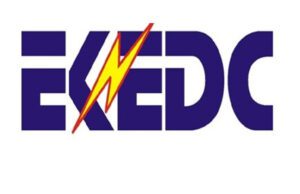Fitch forecasts crude reserves to soar to $43bn in 2022
A FITCH Ratings has predicted that Nigeria’s foreign exchange reserves would increase to $43 billion in 2022, as opposed the previous $40.5 billion witnessed at end-2021.
The company also affirmed Nigeria’s Long-Term Foreign-Currency Issuer Default Rating (LTFC IDR) at ‘B’ with a Stable Outlook.
Nigeria’s gross international reserves have been bolstered by higher oil export receipts, which the rating agency said, would continue in 2022. “We estimate that the combination of oil exports and remittance inflows helped to bring the current account (CA) into balance in 2021 after a deficit of 4.2 per cent of GDP in 2020,” it stated.
Fitch’s baseline assumption is for the CA balance to remain broadly unchanged in 2022, but sustained higher oil prices at their present level of $112 per barrel could widen the 2022 current account surplus to four per cent of Gross Domestic Product (GDP) with upside to Nigeria’s international reserves.
Higher global oil prices, according to Fitch, would drive an improvement in external liquidity and support near-term economic growth.
These improvements are balanced against high hydrocarbon dependence, which leaves Nigeria vulnerable to negative oil price shocks and structurally low domestic revenue mobilisation.
It further disclosed in a statement on Friday, that the continuation of fuel subsidies would limit upside from higher oil prices on Nigeria’s public finances.
Forecasts are based on Fitch’s December 2021 oil price assumptions ($70 per barrel in 2022 and $60 per barrel in 2023), but Fitch has considered alternate oil price scenarios, including oil prices at current levels.
While substantially higher oil prices could lead to a higher outcome of Fitch’s Sovereign Rating Model (SRM), “we could deem such a change temporary and reflective of Nigeria’s high exposure to oil prices, which also entail heightened risks of a renewed down cycle,” it stated.
According to the agency, there would be general government debt, including the Federal Government of Nigeria’s (FGN) overdraft with the Central Bank of Nigeria (CBN), which it expects to increase to 32 per cent of GDP by end-2022, well below the current ‘B’ median forecast of 79.1 per cent.
It says debt affordability metrics related to revenue are helped by an increase in non-oil revenue to an estimated 5.6 per cent of GDP in 2021, from an average of 3.9 per cent in the previous five years.
“However, debt still stood at 348 per cent of revenue by the end-2021, above the current ‘B’ median of 325 per cent. The ratio of FGN debt to FGN government revenue is much higher, at over 755 per cent. If oil prices remain above Fitch’s current assumptions, higher nominal GDP and oil revenue will likely lead to some improvement in debt metrics,” Fitch noted.




